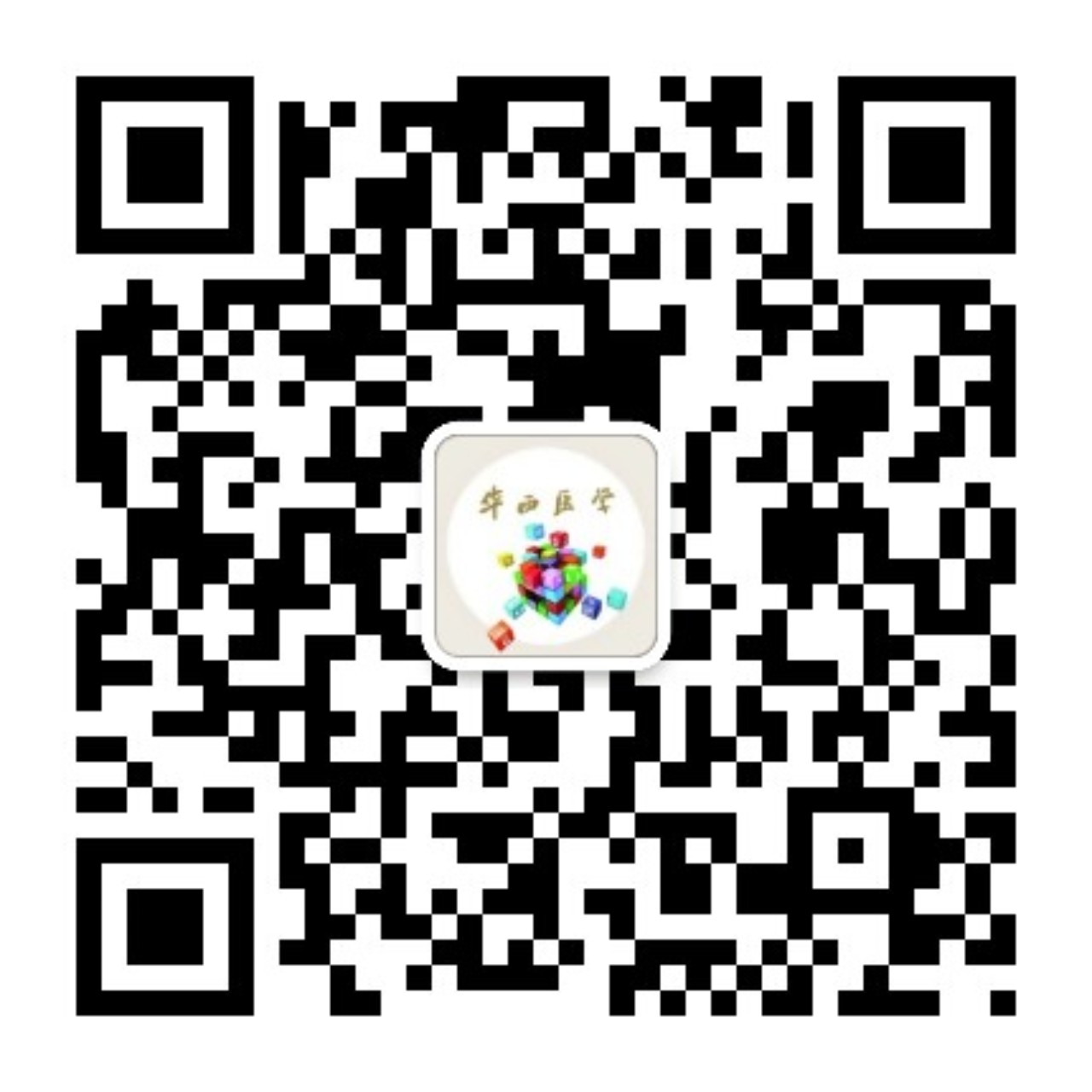Objective
To investigate the present situation and effect of public health education based on WeChat platform in a first class of the third grade hospital in Sichuan province.
Methods
We designed the patient/relative health education questionnaire by literature reading and analysis, and expert consultancy. Then according to the inclusion and exclusion criteria, from April to December 2015, the questionnaire was used to investigate inpatients and their relatives in departments within the WeChat platform including the Department of Endocrinology, International Health Care Center, Department of Gastrointestinal Surgery, Department of Thoracic Surgery, and Department of Dermatovenereology.
Results
There were 5 WeChat public accounts in the hospital, and the average running days was 177.2, the average number of subscription was 2 974, and the average number of pushed messages was 30. A total of 289 patients/relatives were surveyed, among whom 137 subscribed to the WeChat public account. The investigation results showed that 54.02% of the responders were university or college graduates, most of whom had stable jobs (civil servants: 12.41%, factory workers: 13.87%, medical staff: 9.49%, teachers: 7.30%, IT workers: 6.57%), and had a longer disease course averaging 4.5 years. Among the respondents, 87.59% came to know the WeChat public account through the publicity work by the hospital departments where they stayed, 30.66% thought it was very helpful and 63.50% considered it to be useful, and 47.45% read WeChat messages every day. They admitted that it was convenient and could be found at any time (63.50%, 66.42%), but the drawback was online communication with health educators was not integrated in the platform (54.74%).
Conclusions
Health education WeChat platform is effective to give health education to the patients and their relatives, but there are also some shortcomings. More functions should be integrated in order to provide comprehensive health education knowledge to the patients.
Citation:
HUANGMingjun, SONGJinping, ZHUHong, YUANLi, LIRongqiong, YANGJie, YANGMei, CHENJihui. Investigation on developing health education through WeChat platform in a first class of the third grade hospital. West China Medical Journal, 2017, 32(1): 107-111. doi: 10.7507/1002-0179.201509008
Copy
Copyright © the editorial department of West China Medical Journal of West China Medical Publisher. All rights reserved
| 1. |
郭敏, 周晓英, 宋丹, 等. 互联网 + 时代的我国医院微信信息服务研究. 图书与情报, 2015(4): 19-25.
|
| 2. |
中国互联网络信息中心. 2013-2014 年中国移动互联网调查研究报告. (2014-08-26)[2015-05-05]. http://www.cnnic.net.cn/hlwfzyj/ hlwxzbg/ydhlwbg/201408/P020140826360212699278.pdf.
|
| 3. |
冯丹娃. 自媒体时代文化产品营销革命. 北方论丛, 2013(6): 159-161.
|
| 4. |
赵亿. 从微信公众号看纸媒与新媒体的融合——以《扬子晚报》官方微信公众号为例. 传媒, 2014, 5(10): 36-38.
|
| 5. |
刘景景, 杨淑娟, 沈阳. 2014 年传统媒体微信公众号分析. 新闻与写作, 2014(12): 16-19.
|
| 6. |
中国电子商务研究中心. 2014 年微信公众平台发展现状报告. (2014-09-13)[2015-05-05]. http://www.docin.com/p-913685927.html.
|
| 7. |
马红岩. 基于内容营销的微信传播效果研究. 商业研究, 2014(11): 122-129.
|
| 8. |
李敏, 王珏, 何媛. 自媒体时代医院微信平台建设的实践与思考. 现代医院管理, 2015, 13(12): 80-82.
|
| 9. |
张振伟, 李响. 我院医院文化建设的实践与探索. 中国医院管理, 2010, 30(9): 62.
|
| 10. |
朱建华. 微信公众号运营效果冷热两重天. 全媒体时代, 2014(12): 70-73.
|
| 11. |
张德申, 秦红亮. 微信公众平台开发——订阅号功能开发研究. 电子技术与软件工程, 2013(19): 65-67.
|
| 12. |
彭立生, 罗玫, 范小洪, 等. 深圳市二甲以上医院微信使用情况分析. 现代医院, 2015, 15(5): 136-139.
|
| 13. |
彭立生, 罗玫, 范小洪, 等. 广东三甲医院微信使用情况调查研究. 现代医院, 2015, 15(4): 142-145.
|
| 14. |
徐杰. 微信公众平台在医院健康教育中的应用. 中国健康教育, 2015(1): 86-87.
|
| 15. |
夏玉兰, 叶洋鹰, 徐慧, 等. 浅谈微信公众平台在医院的推广及运用效果. 中国民康医学, 2015, 27(9): 109-110.
|
| 16. |
程雄, 黄毅. 城市公立医院运用互联网思维进行改革的实践. 华西医学, 2016, 31(10): 1766-1769.
|
- 1. 郭敏, 周晓英, 宋丹, 等. 互联网 + 时代的我国医院微信信息服务研究. 图书与情报, 2015(4): 19-25.
- 2. 中国互联网络信息中心. 2013-2014 年中国移动互联网调查研究报告. (2014-08-26)[2015-05-05]. http://www.cnnic.net.cn/hlwfzyj/ hlwxzbg/ydhlwbg/201408/P020140826360212699278.pdf.
- 3. 冯丹娃. 自媒体时代文化产品营销革命. 北方论丛, 2013(6): 159-161.
- 4. 赵亿. 从微信公众号看纸媒与新媒体的融合——以《扬子晚报》官方微信公众号为例. 传媒, 2014, 5(10): 36-38.
- 5. 刘景景, 杨淑娟, 沈阳. 2014 年传统媒体微信公众号分析. 新闻与写作, 2014(12): 16-19.
- 6. 中国电子商务研究中心. 2014 年微信公众平台发展现状报告. (2014-09-13)[2015-05-05]. http://www.docin.com/p-913685927.html.
- 7. 马红岩. 基于内容营销的微信传播效果研究. 商业研究, 2014(11): 122-129.
- 8. 李敏, 王珏, 何媛. 自媒体时代医院微信平台建设的实践与思考. 现代医院管理, 2015, 13(12): 80-82.
- 9. 张振伟, 李响. 我院医院文化建设的实践与探索. 中国医院管理, 2010, 30(9): 62.
- 10. 朱建华. 微信公众号运营效果冷热两重天. 全媒体时代, 2014(12): 70-73.
- 11. 张德申, 秦红亮. 微信公众平台开发——订阅号功能开发研究. 电子技术与软件工程, 2013(19): 65-67.
- 12. 彭立生, 罗玫, 范小洪, 等. 深圳市二甲以上医院微信使用情况分析. 现代医院, 2015, 15(5): 136-139.
- 13. 彭立生, 罗玫, 范小洪, 等. 广东三甲医院微信使用情况调查研究. 现代医院, 2015, 15(4): 142-145.
- 14. 徐杰. 微信公众平台在医院健康教育中的应用. 中国健康教育, 2015(1): 86-87.
- 15. 夏玉兰, 叶洋鹰, 徐慧, 等. 浅谈微信公众平台在医院的推广及运用效果. 中国民康医学, 2015, 27(9): 109-110.
- 16. 程雄, 黄毅. 城市公立医院运用互联网思维进行改革的实践. 华西医学, 2016, 31(10): 1766-1769.




